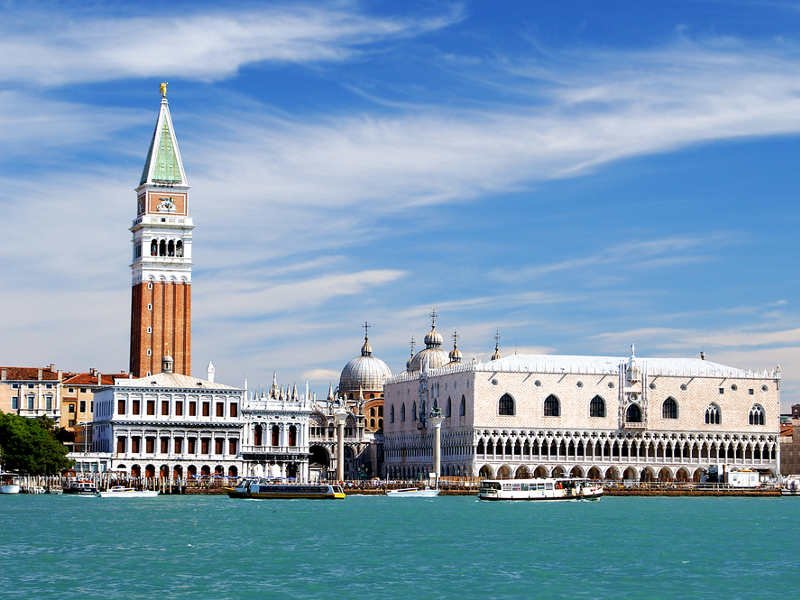
Veneto in the European top 10 with nearly 18 million Italian and foreign visitors in 2016
Sea, Dolomites and Venice: it is the triptych that makes Veneto the most visited Italian region, the only one of the top ten in Europe. On the one hand, there is the coast of the province of Venice, from Bibione to Rosolina, through the large number of pearls like Jesolo Lido and Caorle: miles of beaches that have nothing to envy to those of Emilia Romagna, which are traditional destinations of Austrians and Germans, who start to frequent them from May.

On the other hand there are the Dolomites, a UNESCO World Heritage Site, the “pearl” Cortina d’Ampezzo and mountains like the Crystal, the Marmolada or the Three Peaks of Lavaredo, chosen by a growing number of foreigners for hiking and walk in the woods.
From the ‘jewel’ Venice to the Prosecco hills
In the middle there are villages and cities, starting from Venice, which alone is worth more than 20 million presences, which occupy all the year the hotels between the streets and San Marco then go all the way to Murano, Burano and the other islands of the lagoon. But then, they move to see Giotto’s works in Padua, Palladio’s work in Vicenza or to touch Juliet’s boob in Verona, a classic lucky ritual that is repeated every year by thousands of people who visit the city by reliving the emotions of Shakespeare’s work, and perhaps by watching that represented at the Arena.
At the gates of Verona, in recent years, tourism is growing on Lake Garda, where more and more visitors arrive each year. Then there is the thermal tourism, with places like Abano and Montegrotto, near Padua, and the gastronomic and oenological tourism, wooed by the Prosecco boom, whose hills have recently been nominated World Heritage by Unesco.
In 2016, record number of tourists
On the other hand, in 2016, there was the record number of tourists: arrivals were 17,856,567 (+ 3.5%), with foreigners 11,525,916 (+ 2.8%) and Italians (6,330,651 + 4, 7%); total attendance 65,392,328 (+ 3.4%), with 43,961,624 foreigners (+ 4.1%) and 21,430,704 Italians (+ 1.8%). If we look at the turnover, tourism is the most important industry in Veneto, with revenues exceeding $ 17 billion. Figures that could be retouched, again, up: on the beaches, indeed, summer started right and June also saw double-digit increases in different places.
And if during the winter the snow did not help the skiers, no less people went to Cortina or the other Dolomites, thanks to the massive investments of the last years for the artificial snowing of the slopes, which fall between breath-taking views. A unique scenario, to the point that the Tre Cime area was chosen for certain filming of the new movie Star Wars, the eighth of the saga: tourism in Veneto, it should be said, is spatial.
Italian Veneto in the top 10 most visited regions of the EU
Spain, France and Italy are the favorite destinations for European tourists, but only one Italian region – Veneto – falls in the “top ten” of the European Union, according to data published by Eurostats for the number of nights spent for tourism in 2015. In the ranking of the ten most popular destinations, the Canary Islands in Spain are clearly ahead with 94 million nights in 2015. Spain is the country with more regions in the ‘top ten’ with 75.5 million nights for Catalonia, 65.2 million for the Balearic Islands and 61.4 million for Andalusia.
France has three regions among the ten most popular with Paris and Ile de France (76.8 million nights, second in the EU), Provence-Côte d’Azur (54.6 million) and Rhône-Alpes ( 48.7 million). Croatia ranks fourth in the EU (68.1 million nights), while Veneto is the only Italian region in the top ten, finishing in sixth place with 63.3 million nights.
Six Italian regions in the Top 30
However, if you consider the 30 favorite destinations in the EU, Italy is tied with Spain and France with six regions in the ranking: Veneto, Tuscany, Lombardy, Emilia-Romagna, Lazio and the autonomous province of Bolzano. The southern regions are absent: according to Eurostat, in 2015, 58% of Europeans spent their holidays in their own country, 26% in another EU Member State. Only 16% of overnight stays were spent in non-EU destinations, with the United States being much more popular (13.8% of overnight stays by EU residents in the rest of the world), followed by Turkey (10%). 4%) and Morocco (4.6%).